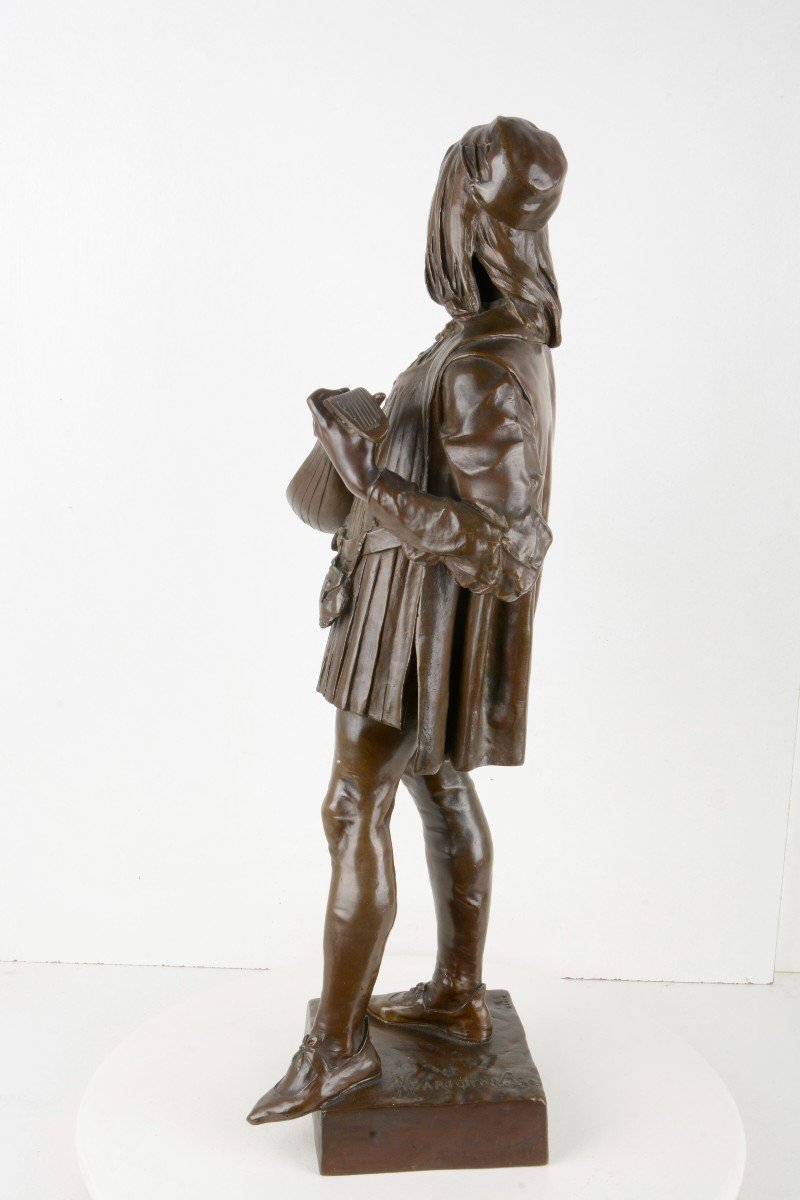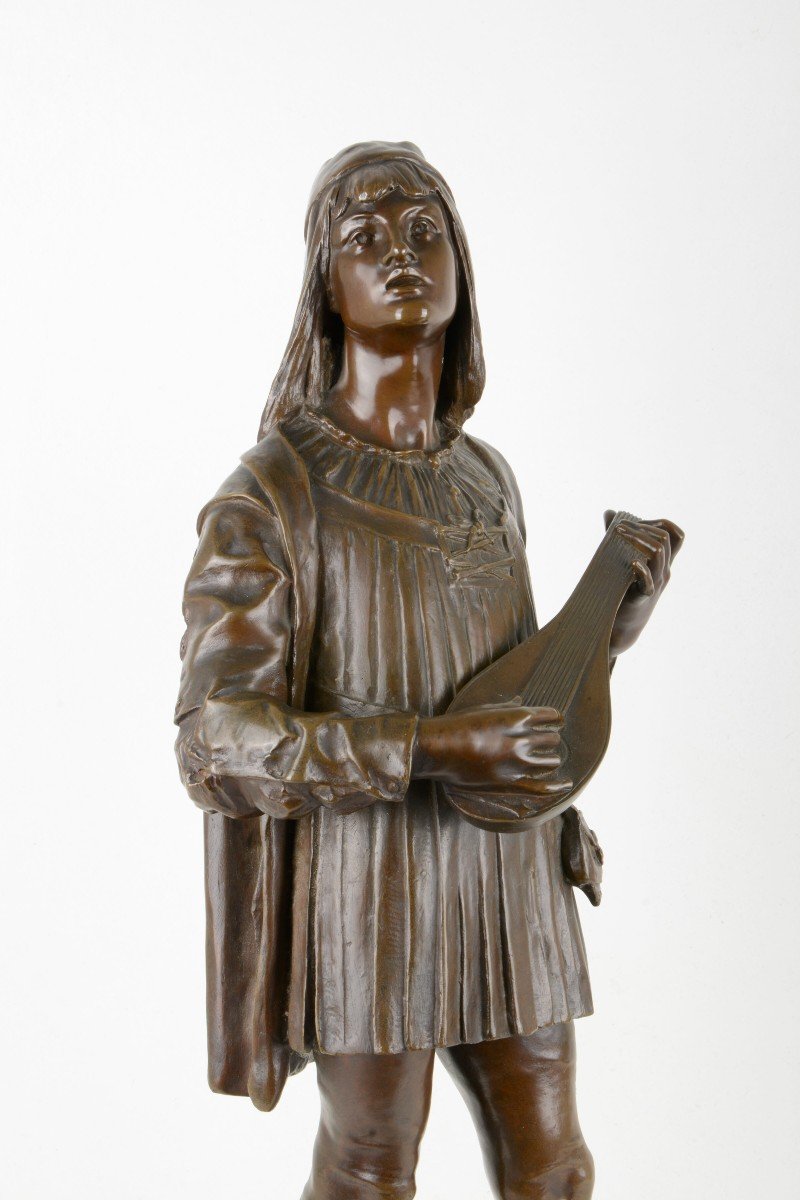Claudius, Eugene, Jean-Alfred. Three brothers, three artists. Two sculptors, one painter. Despite his talent and an abundant production, Eugène Marioton did not manage to obtain orders from the State. This is how to live, he turned to bronze edition. He carved a considerable number of statues, probably around four hundred, in very diverse themes. If the historical reality is not his major concern, he nevertheless knows how to find his audience, which is worth being one of the most famous artists of the years 1890-1910. Eugène Marioton died in Paris on September 19, 1933.
Yet elegant and full of charm, this theme of the lute player has been very little addressed in sculpture. The lute was a very fashionable instrument in France, but especially in Italy, in the 16th and 17th centuries. The Italian painting of the Renaissance largely evoked it. On the other hand, there is no lute in sculpture, no doubt because people preferred to sculpt in the antique style. In the 19th century Emile Picault (1833-1915) launched into it, and even then he treated it in an Orientalist mode. As well as Emile-André Boisseau (1842-1923), Auguste Moreau (1834-1917) or even Paul Dubois (1827-1905), certainly carried by the "Verdi wave", and the success as resounding in France as in Italy , from the opera by the great master Il Trovatore. This grandiose opera tells the incredible story of a young nobleman, Manrico, or Il Trovatore (because he strums the lute at will), kidnapped in his childhood by a gypsy, then murdered for an obscure reason, unrelated with the kidnapping, by the family of this young nobleman. The Gypsy's daughter, Azucena, who raised the child kidnapped by her mother, takes revenge for her mother's death by leaving Count de Luna, the older brother of Il Trovatore (who does not know that he is it's about his brother) murder the young musician because he is serenading under the windows of Leonora, his sweetheart, which he cannot tolerate. In short, a complex and complicated story, full of twists and turns of all kinds, but carried by the sublime music of Giuseppe Verdi at the height of his art and his fame.
To go further: https://www.lestresorsdegamaliel.com/sculptures/74-la-serenade.html












































 Le Magazine de PROANTIC
Le Magazine de PROANTIC TRÉSORS Magazine
TRÉSORS Magazine Rivista Artiquariato
Rivista Artiquariato